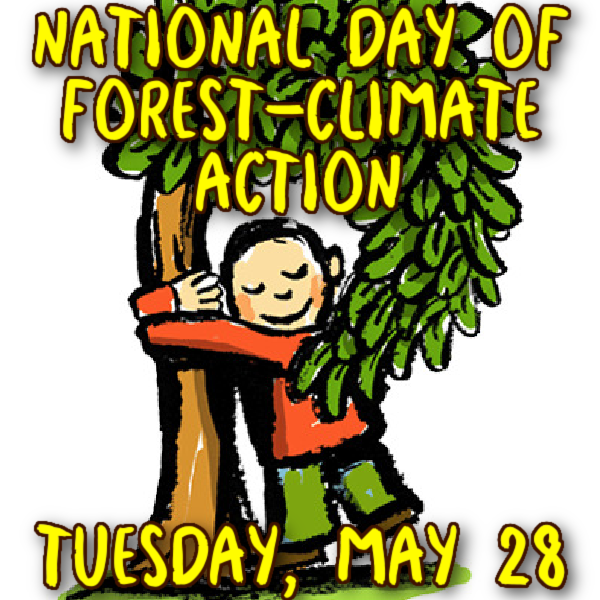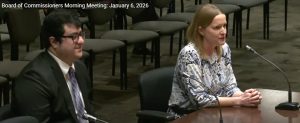Act to stop ’emergency’ logging May 28
7 min read
DJ Suss D: According to Eco-Integrity Alliance, an environmental media accountability watchdog group, as of March 2024, 894,898 acres across California, Colorado, Idaho, Montana, New Mexico, South Dakota, and Washington, are slated to be logged, including clearcutting and targeting mature and old-growth trees under an anti-science taxpayer-subsidized scheme that falsely claims the best way to protect communities from wildfire is to cut down forests with a goal of 45 million acres over the coming decades.
[00:00:36] Instead, the scientific consensus is that hardening homes, Firewise measures—such as installing non-flammable roofs and maintaining defensible space 15 to 60 feet around structures—can save the vast majority from even the most intense wildfire.
[00:00:52] Much of this forest destruction is being fast tracked under a controversial emergency action authorization invoked by U.S. Secretary of Agriculture and former corporate Big Ag lobbyist Tom Vilsack, as laid out under Section 40807 of the Infrastructure Investment and Jobs Act.
[00:01:08] The so-called emergency logging bypasses alternatives required by the National Environmental Policy Act, while skirting the objection period of the pre-decisional administrative review process, a legal challenge historically used by environmental advocates to pause or stop destructive projects.
[00:01:25] A massive and growing body of studies show that not only won’t logging protect communities from the natural and essential process of wildfire, tree cutting can make flames burn hotter and spread faster by opening forests to sunlight and wind. Indeed, the whole premise of logging to create historical conditions of park-like forests due to so-called overgrown stands and unusual high severity wildfire has been repeatedly debunked with numerous peer-reviewed studies, proving that Western forests prior to fire suppression have always grown densely and routinely experienced mixed and high severity wildfire.
[00:02:00] Josh Hart of FeatherRiverAction.org spoke on a recent episode of Final Straw Radio.
[00:02:06] Josh Hart (Feather River Action): The Plumas County more or less overlaps with the Plumas National Forest and ‘The Lost Sierra’ refers to the Feather River watershed, and this is the area between Lake Tahoe in the south and Lassen in the north. It encompasses a very large area.
[00:02:19] It’s called ‘The Lost Sierra’ because it hasn’t been as heavily impacted by tourism or development as some other places in the Sierra Nevada mountain range. So that means there’s less population. There’s for example only 18,000 population in a county the size of Delaware.
[00:02:35] So it’s a vast area with very small communities and a very low population. This has allowed the wild to recuperate from the decades of damage inflicted on it. And so now we have ancient forest which is recovering; we have two wolf packs in Plumas County who have come probably down from Oregon to expand into new territory; people have taken photographs of entire prides of mountain lions. When have you heard of a pride of mountain lions? Something you hear about in Africa.
[00:03:06] And so even though this is not like a intact ecosystem, like we would talk about in some parts of Alaska that are completely untouched, it is, a lot of it is mostly intact, and we have some really essential carbon storage in the form of mature and old-growth forests and these ancient forests that are just irreplaceable.
[00:03:25] One of the only rain forests in the Sierra Nevada mountain range is found in Strawberry Valley—unfortunately, one of the areas they want to log, but there are many, many endangered and threatened and sensitive species of plants and animals in our area.
[00:03:38] I grew up in the Bay Area, San Francisco Bay Area, and when I moved to Plumas County, I was astounded to see river otters and the river beavers making dams. Just something you don’t see a lot in more urbanized areas. And we need to protect that wild and allow it to recover further to rewild it, not bring in all these extractive industries.
[00:03:58] They are using the fear of wildfire—people’s very justified fear of wildfire—to justify this extreme logging when it will not achieve the goals that they set out for the projects. It’s a $650 million program. So like the good part of a billion dollars heading straight for one small rural county in Northern California, it’s 275,000 acres altogether.
[00:04:23] The central and west slope portion of this is one portion. There’s also an east side portion closer to Susanville, but together, I mean, we’re talking about over 400 square miles of industrial deforestation, herbicide application, and in their documents, they admit to carrying out up to 77% canopy reduction, which is essentially a clear cut, leaving 23% of the canopy untouched.
[00:04:50] And they’re targeting trees, which are up to eight feet in circumference. So these are large, mature trees, fire-resistant trees that they’re logging in the name of fire resistance. They are using propaganda and fear to push forward an aggressive timber harvest agenda that not only targets California, but also several of the other Western states like Idaho, Montana are also targeted.
[00:05:14] The forest down in the Big Sur area, Ventana, that area, that’s also targeted with a similar scale of forest treatments, which refers to intensive logging. So essentially what the Biden Administration is doing, they announced several months ago, you might’ve seen this, that, ‘We’re going to phase out logging in old-growth and mature forests. And we’re going to protect these forests as carbon storage.’ And it sounded really, really good.
[00:05:39] But with their, with the other hand of the Biden administration, with the head of the U.S. Forest Service, Agriculture Department, Tom Vilsack, he’s basically authorized this emergency declaration to authorize extreme logging in many of these old-growth and mature areas that the Biden Administration is claiming to protect, but only in the—I think it’s 2025 when these regulations come into effect.
[00:05:59] And so they’re planning to basically, from my perspective, looking at the situation, cut the old-growth and mature forests while the regulations still allow it, while saying that they’re protecting it, but their protections only go into effect once these forests have been cut.
They’re reacting to wildfire by cutting forests, which are huge sponges for carbon dioxide in the atmosphere and what, when we need them to remain intact in order to absorb that carbon. But they’re cutting them.
[00:06:28] And as a result, you have, once you cut a tree, it starts to off-gas that carbon into the atmosphere right away. And people think, ‘Oh, well, logging, it goes into furniture and houses and the carbon just stays there.’
[00:06:39] Only between about 15% to 18%, according to studies, of the carbon in wood that’s harvested in a forest is actually stored in the final product. The vast, vast majority is into the atmosphere and worsens the kind of preconditions that lead to the severe wildfires.
[00:06:57] The ignorance part is that it’s all about fuels. It’s not all about fuels and anyone who tries to build a fire in a woodstove will know it’s not just about fuels. It’s about how moist they are and how much oxygen is allowed to access that.
[00:07:11] And so if you transfer that to a forest, yes, we need to reduce fuels right by your house, right around your house, that would feed the flames. And so the fact that we have a government who’s using pseudoscience and pushing forward logging as a solution to these wildfires when it’s actually going to exacerbate the climate crisis, which caused the wildfire crisis, it’s really disturbing. Because suddenly you realize, ‘Oh, well, you know, this is a captured agency, the U.S. Forest Service. This is not a neutral agency that serves the public, that manages public land.’
[00:07:43] DJ Suss D: The forests act as a natural water filter.
[00:07:46] Josh Hart (Feather River Action): The Feather River is the largest watershed in California. It’s responsible for providing water to 26 million Californians, as well as a lot of agriculture through Lake Oroville. So it’s a really essential water source for the whole of California. It’s really essential wildlife habitat. It’s been touched less than other places in California.
[00:08:06] And the way that the Feather River got its name was that when settled, when European settlers first came to this area, what they witnessed was a moving conveyor belt of feathers. They couldn’t even see the river itself, the water of the river, because there were so many birds that lived in this area. Their feathers literally coated the entire surface of the water.
[00:08:26] And so, our goal as an organization, as Feather River Action, is to get back to approaching that point, to say: ‘This is an area that is already wild that we can go further with and that we can build back those populations of animals and plants so that there really is a healthy, thriving, wild ecosystem. And that’s also going to benefit local economies too.’
[00:08:47] DJ Suss D: For more information on the upcoming Day of Action for the Forest on May 28, go to www.eco-integrityalliance.org and FeatherRiverAction.org and FeatherRiverWatershedAlliance.org.
[00:09:01] The Final Straw can be heard on KEPW on Saturdays at 9 p.m. For KEPW News, I’m DJ Suss D.



